With the nation battered by the Great Depression, two daring visionaries and entrepreneurs unveiled their grand, expensive creation when Radio City Music Hall opened on 27 December 1932 in New York City. The gala opening night was as impressive as the gleaming new Art Deco theater, with more than 500 performers and a variety of entertainments ranging from serious opera to slapstick vaudeville.
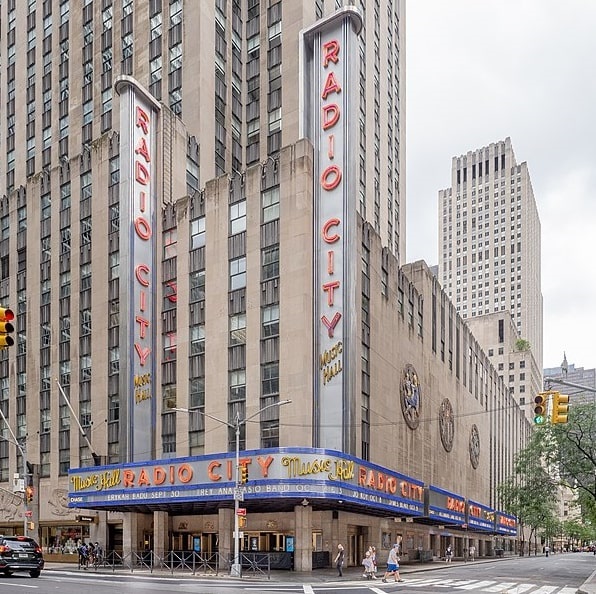
The 6,000-person audience, including hundreds of celebrities, was awe-struck by both the building and the performances, reveling in the magic of the historic night.
Radio City Music Hall was created from the dreams of Samuel “Roxy” Rothafel – known for his lavish presentations of silent films in grand movie palaces – and the fortune of John D. Rockefeller, the billionaire capitalist who was turning 12 dilapidated acres in Manhattan into Rockefeller Center. Their vision was to create a “people’s palace” where ordinary, hard-working Americans could enjoy wholesome family entertainment at affordable prices.
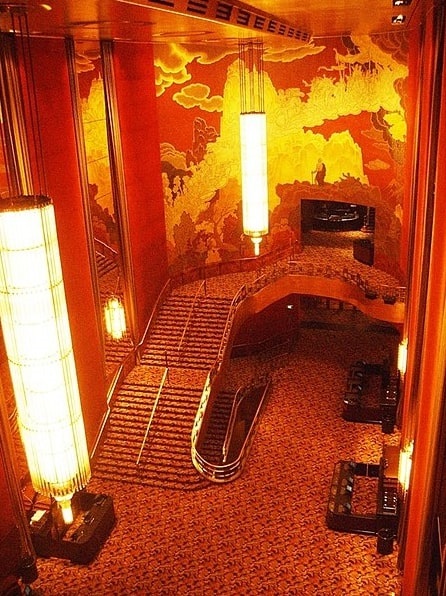
Their dream became a success and an enduring part of the American entertainment landscape: to date, more than 300 million people have enjoyed concerts, movies and stage shows at Radio City Music Hall.
Everything about the new music hall was on a grand and historic scale. It is the largest indoor theater in the world, with a staggeringly large stage 144 feet long and nearly 67 feet wide. Its renowned “Mighty Wurlitzer” pipe organ, bristling with 4,410 pipes, is the largest ever built for a movie theater. More than 700 films have made their premiere at Radio City Music Hall, and the resident dance troupe the “Rockettes” has achieved international fame. The Hall also hosts special events, such as its annual and wildly successful Christmas Spectacular, and such important award ceremonies as the Grammy Awards and the Tony Awards.
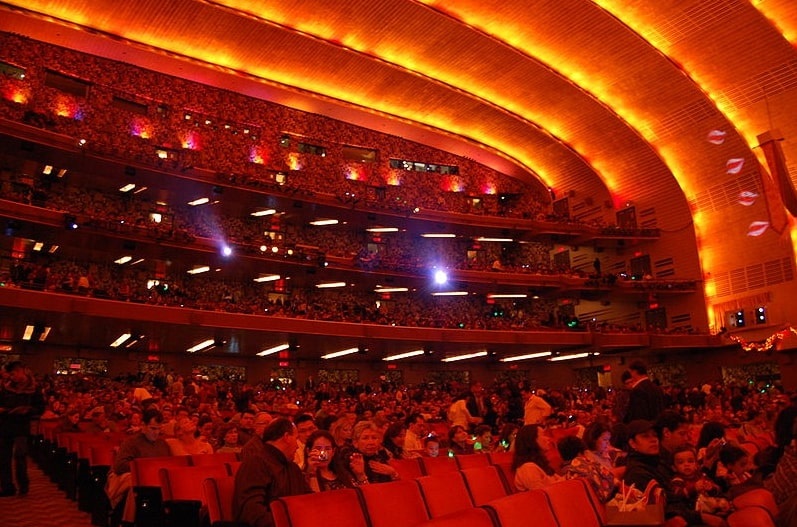
The opening of Radio City Music Hall was a newsworthy event covered by newspapers nationwide. The first of the following two articles is a front-page news report covering the opening itself, while the second is an editorial praising Rothafel and Rockefeller.
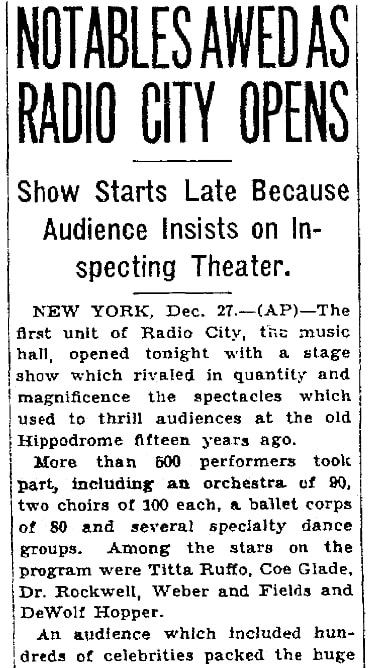
Here is a transcription of this article:
NOTABLES AWED AS RADIO CITY OPENS
Show Starts Late because Audience Insists on Inspecting Theater.
NEW YORK, Dec. 27. – (AP) – The first unit of Radio City, the music hall, opened tonight with a stage show which rivaled in quantity and magnificence the spectacles which used to thrill audiences at the old Hippodrome fifteen years ago.
More than 500 performers took part, including an orchestra of 90, two choirs of 100 each, a ballet corps of 80 and several specialty dance groups. Among the stars on the program were Titta Ruffo, Coe Glade, Dr. Rockwell, Weber and Fields and DeWolf Hopper.
An audience which included hundreds of celebrities packed the huge theater, which is the first part completed of the Rockefeller Community in the center of Manhattan devoted to stage, motion picture, radio, musical and operatic productions.
John D., Jr., Is There
S. L. (Roxy) Rothafel, who had the big idea, and John D. Rockefeller, Jr., who put up the money, were among the hundreds of celebrities. Rockefeller, in white tie, tails and topper, arrived an hour before the curtain went up. He shielded his face from photographers with his hat as he hurried to a seat in the first mezzanine.
Alfred E. Smith, with brown derby, drew the only ovation. Other notables included Mayor-elect John P. O’Brien, Gene Tunney, John F. Curry, Leopold Stokowski, Fannie Hurst, Walter P. Chrysler, Amelia Earhart and scores of theatrical personages. Fannie Hurst wore a black velvet dress with a train that covered half a dozen steps as she ascended the grand staircase.
The curtain was scheduled to rise at 8:15 o’clock. At 8:35 bugles blew for the opening and a few minutes later a trumpet sounded, but the throng continued to stroll leisurely about the foyer looking over the theater and themselves. It was not until 9 o’clock that the show got under way, and for a full hour after that the lobby was full of promenaders.
The show itself, like the audience, was a pot pourri – opera selections by well known singers, vaudeville, ballets, the Tuskegee Choir, dancers and singers, and many musicians.
In the opening number, Caroline Andrews singing Rimsky-Korsakoff’s “Hymn of the Sun,” Roxy regaled his audience with the splendors, the magnificence and the modern tricks of the contour curtain that shields the largest stage in the world. While thirteen motors put the curtain through its paces, the lights played a kaleidoscopic symphony.
It was the first program Roxy ever has presented without a moving picture. For those who like their entertainment from the screen, another theater has been built one block south, which will have its formal opening Thursday night.
Rumors that Roxy had done away with epaulettes, gold braid and fourrageres for the ushers in the new theater proved true. They wore a sort of glorified Tuxedo with black dancing pumps, thin silver piping on the silk lapels, stiff white shirts, and black bow ties.
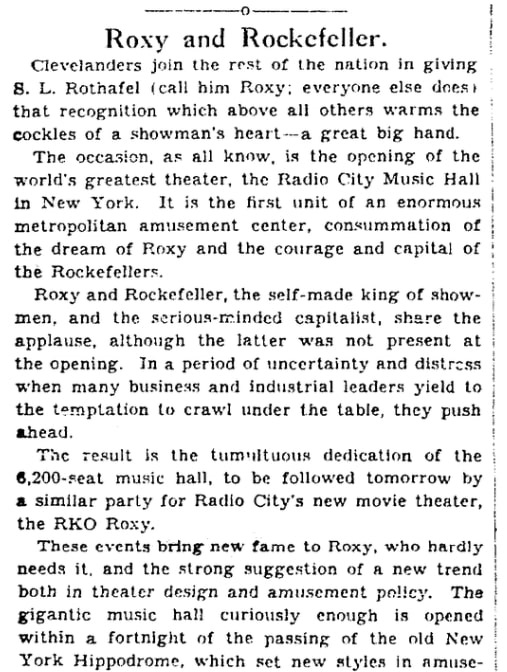
Here is a transcription of this article:
Roxy and Rockefeller.
Clevelanders join the rest of the nation in giving S. L. Rothafel (call him Roxy; everyone else does) that recognition which above all others warms the cockles of a showman’s heart – a great big hand.
The occasion, as all know, is the opening of the world’s greatest theater, the Radio City Music Hall in New York. It is the first unit of an enormous metropolitan amusement center, consummation of the dream of Roxy and the courage and capital of the Rockefellers.
Roxy and Rockefeller, the self-made king of showmen and the serious-minded capitalist, share the applause, although the latter was not present at the opening. In a period of uncertainty and distress, when many business and industrial leaders yield to the temptation to crawl under the table, they push ahead.
The result is the tumultuous dedication of the 6,200-seat music hall, to be followed tomorrow by a similar party for Radio City’s new movie theater, the RKO Roxy.
These events bring new fame to Roxy, who hardly needs it, and the strong suggestion of a new trend both in theater design and amusement policy. The gigantic music hall curiously enough is opened within a fortnight of the passing of the old New York Hippodrome, which set new styles in amusement 30 years ago. The new music hall is far larger and grander, and the new Roxy program has a prodigality which exhausts even theatrical adjectives. Grand opera, vaudeville, dancing – all tied together smoothly with the suave knots of Roxy showmanship.
It is a notable piece of theatrical pioneering. Such courage merits success.
Note: An online collection of newspapers, such as GenealogyBank’s Historical Newspaper Archives, is not only a great way to learn about the lives of your ancestors – the old newspaper articles also help you understand American history and the times your ancestors lived in, and the news they talked about and read in their local papers.
